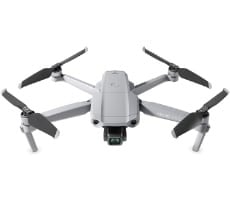LG Optimus G Pro from AT&T Review
When you start up the Optimus G Pro for the first time, you’ll see AT&T’s Ready2Go screen. This service lets you set up your phone from a web browser, making it quick and easy to configure all of your accounts, import contacts, personalize your wallpaper, ringtone, web bookmarks and home screens, and connect to Wi-Fi networks.
After setting up the Optimus G Pro using Ready2Go, you'll see the Optimus G Pro's default Home screen which houses five Quick Keys or icons just above the Home button. By default, you'll find Phone, Messaging, Browser, Camera, and Apps located here. You can press and hold to remove an icon or add a new icon to this bar. We were able to add two additional icons to this bar for a total of seven icons. You cannot remove the Apps icon from the Quick Keys launcher, however.
The Optimus G Pro has three default Home screens, but you can add additional Home screens for a total of up to seven. To view a thumbnail of all Home screens, pinch in. While viewing the full list of apps, you can add background images as a wallpaper and change the size of the app icons.
LG includes a number of software features that help differentiate the Optimus G Pro from other phones. QuickRemote lets you use the phone's built-in Infrared sensor to control compatible TVs, Blu-Ray players, cable provider set-top boxes and more. To configure QuickRemote, select a room, add a device, select your device's manufacturer, and press a few on-screen buttons to help the phone determine which signal to send to your device. This app worked pretty well on our home entertainment gear and the setup was quick and easy. If you find yourself using the remote feature often, a quick setting change from within the app will make the QuickRemote app appear automatically on the notification panel or swipe Lock screen when you're at home.
One of the best features that differentiates the LG Optimus G Pro from other phones is known as QSlide. With QSlide, you can view up to three applications at the same time. For example, with QSlide you can watch a video while using another application or take notes in the Note Pad app while surfing the web. To access QSlide, swipe down from the top of the screen. You'll see the QSlide apps which include Videos, Note Pad, Calendar, and Calculator. You can move and resize QSlide apps and change their transparency. This is a really handy feature. In fact, we hope manufacturers will take note of this and implement similar features on future phablets and tablets.
LG also includes a feature known as QuickMemo that lets you capture screen shots, write on any screen, create memos, and share images you've created. You can easily access QuickMemo by dragging your finger down from the top of the screen or by pressing the QuickButton on the left edge of the phone. Although there are times where we found ourselves wanting a stylus to use with the QuickMemo app, LG does not include a stylus with the Optimus G Pro.Another feature LG offer with the Optimus G Pro apart is known as VuTalk. This feature lets you collaborate on a screen in real time with another user, provided they have a phone that also uses VuTalk. Using this feature you can share notes, photos, and maps during a call. Unfortunately we were unable to test VuTalk since we didn't have another Optimus G Pro or other VuTalk compatible phone available.
LG includes its own LG Keyboard as well as the Android keyboard on the Optimus G Pro. The LG Keyboard includes a path option similar to SWYPE where you can enter a word by drawing a path through all the letters. This keyboard has a number of options such as the ability to split while in landscape mode, display an extended view with a number key row, and more. During our tests, we were also pleased with the sound quality on the Optimus G Pro.



















